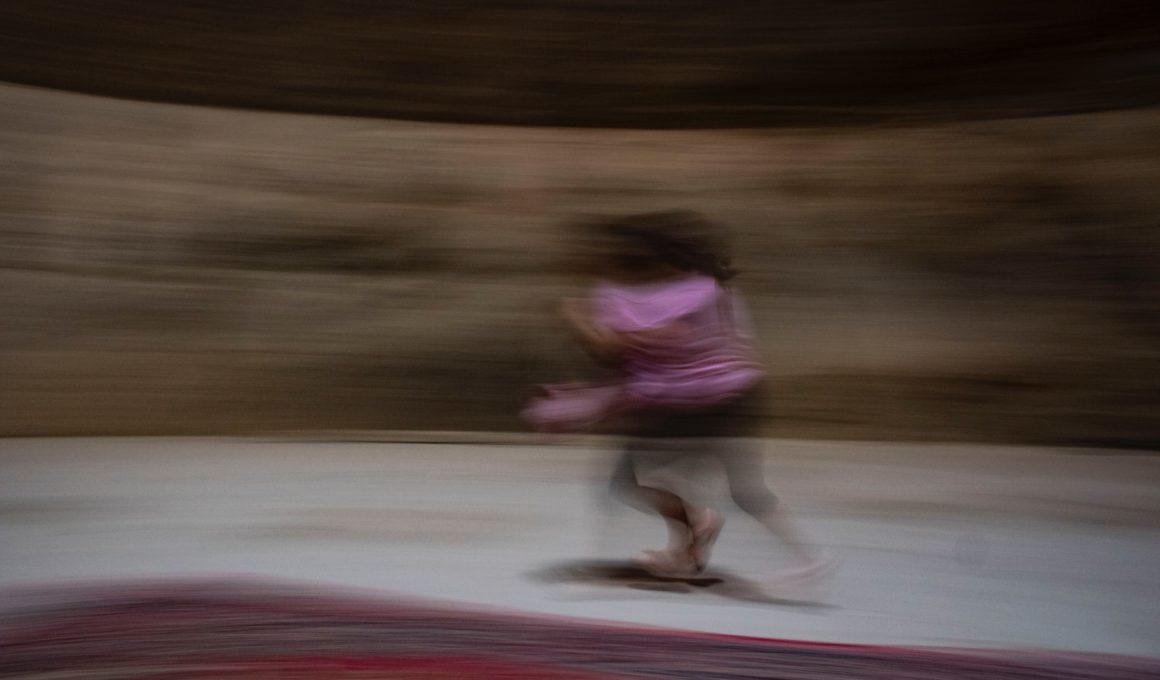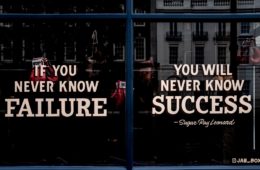Charles Lutwidge Dodgson (1832-1898), better known by his pseudonym Lewis Carroll, was not only an author but a keen observer of human nature. His most famous works are Alice’s Adventures in Wonderland and its sequel Through the Looking Glass, which have become timeless classics.
“Bees have to move very fast to stay still.”
— David Foster Wallace
In Through the Looking Glass, Alice, a young girl, gets schooled by the Red Queen in an important life lesson that many of us fail to heed. Alice finds herself running faster and faster but staying in the same place.
Alice never could quite make out, in thinking it over afterwards, how it was that they began: all she remembers is, that they were running hand in hand, and the Queen went so fast that it was all she could do to keep up with her: and still the Queen kept crying ‘Faster! Faster!’ but Alice felt she could not go faster, though she had not breath left to say so.
The most curious part of the thing was, that the trees and the other things round them never changed their places at all: however fast they went, they never seemed to pass anything. ‘I wonder if all the things move along with us?’ thought poor puzzled Alice. And the Queen seemed to guess her thoughts, for she cried, ‘Faster! Don’t try to talk!’
Eventually, the Queen stops running and props Alice up against a tree, telling her to rest.
Alice looked round her in great surprise. ‘Why, I do believe we’ve been under this tree the whole time! Everything’s just as it was!’
‘Of course it is,’ said the Queen, ‘what would you have it?’
‘Well, in our country,’ said Alice, still panting a little, ‘you’d generally get to somewhere else — if you ran very fast for a long time, as we’ve been doing.’
‘A slow sort of country!’ said the Queen. ‘Now, here, you see, it takes all the running you can do, to keep in the same place.
If you want to get somewhere else, you must run at least twice as fast as that!’
“It is not the strongest of the species that survives,
nor the most intelligent,
but the one most responsive to change.”
— Charles Darwin
Smarter, Not Harder
The Red Queen Effect means we can’t be complacent or we’ll fall behind. To survive another day we have to run very fast and hard, we need to co-evolve with the systems we interact with.
If all animals evolved at the same rate, there would be no change in the relative interactions between species. However, not all animals evolve at the same rate. As Darwin observed, some are more “responsive to change” than others. Species that are more responsive to change can gain a relative advantage over the ones they compete with and increase the odds of survival. In the short run, these small gains don’t make much of a difference, but as generations pass the advantage can compound. A compounding advantage… that sounds nice.
Everyone from Entrepreneurs and Fortune 500 CEOs to best-selling authors and middle managers are embedded with their own Red Queen. Rather than run harder, wouldn’t it be nice to run smarter?
Here are just three of the ways we try to avoid the Red Queen.
- We invest significantly in new product development and content. Our courses, evolve quickly incorporating student-tested concepts that work and reducing the importance of the ones that don’t. Another example, our learning community, adds real-world value to people who make decisions by discussing time-tested principles. This is not a popular path as it’s incredibly expensive in time and money. Standing still, however, is more expensive. We’re not in the business of Edutainment but rather providing better outcomes. If we fail to keep getting better, we won’t exist.
- We try to spend our limited mental resources working on things that won’t change next week. We call these mental models and the ones we want to focus on are the ones that stand the test of time.
- We recognize how the world works and not how we want it to work. When the world isn’t working the way we’d like it to, it’s easy to say the world is wrong and sit back to see what happens. You know what happens right? You fall behind and it’s even harder to catch up. It’s like you’re on a plane. When you’re flying into the wind you have to work very hard. When you’re flying with the wind at your back, you need to expend less energy and you get there earlier. Recognizing reality and adapting your behavior creates a tailwind.
More Examples of the Red Queen Effect
In Deep Simplicity, John Gribbon describes the red queen principle with frogs.
There are lots of ways in which the frogs, who want to eat flies, and the flies, who want to avoid being eaten, interact. Frogs might evolve longer tongues, for fly-catching purposes; flies might evolve faster flight, to escape. Flies might evolve an unpleasant taste, or even excrete poisons that damage the frogs, and so on. We’ll pick one possibility. If a frog has a particularly sticky tongue, it will find it easier to catch flies. But if flies have particularly slippery bodies, they will find it easier to escape, even if the tongue touches them. Imagine a stable situation in which a certain number of frogs live on a pond and eat a certain proportion of the flies around them each year.
Because of a mutation a frog developes an extra sticky tongue. It will do well, compared with other frogs, and genes for extra sticky tongues will spread through the frog population. At first, a larger proportion of flies gets eaten. But the ones who don’t get eaten will be the more slippery ones, so genes for extra slipperiness will spread through the fly population. After a while, there will be the same number of frogs on the pond as before, and the same proportion of flies will be eaten each year. It looks as if nothing has changed – but the frogs have got stickier tongues, and the flies have got more slippery bodies.
Drugs and disease also represent an “arms-race.”
Siddhartha Mukherjee, in his Pulitzer-prize winning book The Emperor of All Maladies describes this in the context of drugs and cancer.
In August 2000, Jerry Mayfield, a forty-one-year-old Louisiana policeman diagnosed with CML, began treatment with Gleevec. Mayfield’s cancer responded briskly at first. The fraction of leukemic cells in his bone marrow dropped over six months. His blood count normalized and his symptoms improved; he felt rejuvenated—“like a new man [on] a wonderful drug.” But the response was short-lived. In the winter of 2003, Mayfield’s CML stopped responding. Moshe Talpaz, the oncologist treating Mayfield in Houston, increased the dose of Gleevec, then increased it again, hoping to outpace the leukemia. But by October of that year, there was no response. Leukemia cells had fully recolonized his bone marrow and blood and invaded his spleen. Mayfield’s cancer had become resistant to targeted therapy…
… Even targeted therapy, then, was a cat-and-mouse game. One could direct endless arrows at the Achilles’ heel of cancer, but the disease might simply shift its foot, switching one vulnerability for another. We were locked in a perpetual battle with a volatile combatant. When CML cells kicked Gleevec away, only a different molecular variant would drive them down, and when they outgrew that drug, then we would need the next-generation drug. If the vigilance was dropped, even for a moment, then the weight of the battle would shift. In Lewis Carroll’s Through the Looking-Glass, the Red Queen tells Alice that the world keeps shifting so quickly under her feet that she has to keep running just to keep her position. This is our predicament with cancer: we are forced to keep running merely to keep still.
This doesn’t only happen in nature, there are many business examples as well.
In describing the capital investment needed to maintain a relative placement in the textile industry, Warren Buffett writes:
Over the years, we had the option of making large capital expenditures in the textile operation that would have allowed us to somewhat reduce variable costs. Each proposal to do so looked like an immediate winner. Measured by standard return-on-investment tests, in fact, these proposals usually promised greater economic benefits than would have resulted from comparable expenditures in our highly-profitable candy and newspaper businesses.
But the promised benefits from these textile investments were illusory. Many of our competitors, both domestic and foreign, were stepping up to the same kind of expenditures and, once enough companies did so, their reduced costs became the baseline for reduced prices industrywide. Viewed individually, each company’s capital investment decision appeared cost-effective and rational; viewed collectively, the decisions neutralized each other and were irrational (just as happens when each person watching a parade decides he can see a little better if he stands on tiptoes). After each round of investment, all the players had more money in the game and returns remained anemic.
In other words, more and more money is needed just to maintain your relative position in the industry and stay in the game. This situation plays out over and over again and brings with it many ripple effects. For example, the company distracted by maintaining a relative position in a poor industry places resources in a position almost assured to get a poor return on capital.
Inflation also causes a Red Queen Effect, here’s Buffett Again:
Unfortunately, earnings reported in corporate financial statements are no longer the dominant variable that determines whether there are any real earnings for you, the owner. For only gains in purchasing power represent real earnings on investment. If you (a) forego ten hamburgers to purchase an investment; (b) receive dividends which, after tax, buy two hamburgers; and (c) receive, upon sale of your holdings, after-tax proceeds that will buy eight hamburgers, then (d) you have had no real income from your investment, no matter how much it appreciated in dollars. You may feel richer, but you won’t eat richer.
High rates of inflation create a tax on capital that makes much corporate investment unwise—at least if measured by the criterion of a positive real investment return to owners. This “hurdle rate” the return on equity that must be achieved by a corporation in order to produce any real return for its individual owners—has increased dramatically in recent years. The average tax-paying investor is now running up a down escalator whose pace has accelerated to the point where his upward progress is nil.
Sources:
– The excellent Sanjay Bakshi






